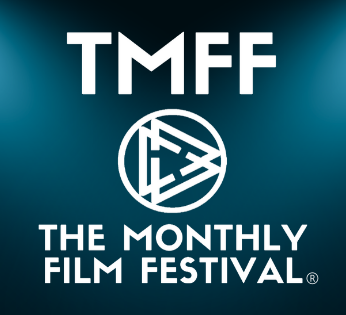Independent film has always done well with creative risk, personal stories, and the freedom to try new things outside of the usual studio systems. But in 2025, a certain trend in the indie world became more popular and powerful than ever: the rise of micro-budget filmmaking. Even the smallest independent budgets are making projects that are getting praise at festivals, getting streaming distribution, and creating a new cinematic language that isn’t based on money but on bold artistic identity.
What used to be a small part of filmmaking has grown into a powerful creative force. Directors of low-budget movies today are showing that good movies need more creativity than money, and that small, creative stories can stand out in a crowded media landscape in ways that big-budget movies can’t.
The financial threshold has changed, and so has creativity
In the past, the word “micro-budget” often meant that there weren’t enough resources or the work wasn’t very good. It means something completely different in 2025. Technology that is easier to get has changed what a small team can do in a big way. A lightweight mirrorless setup that records cinematic 6K footage can now take the place of a camera that used to need a rental house and insurance. Ten years ago, it would have been hard to believe that LED panels, portable lenses, small audio equipment, and cheap editing software would make filmmaking more accessible to everyone.
These tools let filmmakers focus more on the story, the acting, and the mood. Instead of fighting against money problems, they can put their energy into making important creative choices. Filmmaking on a micro-budget has become a planned artistic choice instead of a compromise.
Authenticity as a Form of Creative Currency
Micro-budget films’ authenticity is really appealing to people who are tired of formulaic stories. When resources are limited, filmmakers should focus on what really makes a movie emotional: honest acting, conflicts that are realistic, and settings that reflect real life.
A lot of successful directors in the movement talk about how important it is to:
- Real places instead of studio sets, like city apartments, rural landscapes, empty buildings, and community spaces.
- Natural lighting methods that make visuals look real and draw you in.
- Small casts who really get into their roles, often by working together in rehearsals.
- Improvisation and scripts that can be changed on the fly, so that unexpected events can change the story.
This method makes movies that feel real, grounded, and emotionally raw, which is something that bigger productions sometimes have trouble doing because of all the logistics and oversight.
The One-Person Crew Way of Thinking
The move toward ultra-streamlined production teams is one of the most important trends of 2025. A lot of micro-budget movies are made by teams of just two or three people. Some directors do more than one job, such as being the cinematographer, editor, producer, and sound recordist.
The benefits of this simple structure are very important:
- You have the most creative control with the least amount of interference.
- More flexible scheduling, which makes it possible to shoot at unusual times or in changing settings.
- Decisions are made more quickly, without red tape.
- More closeness between the camera and the actors.
- Not only does this workflow save money, but it also creates a creative space based on trust, experimentation, and personal voice.
The success of the festival shows how values have changed.
Film festivals have been very important in making low-budget movies more popular. Festivals all over the world are putting more and more emphasis on films made on a small budget, praising their creativity and emotional impact. Many recent award-winning short films and features were made for less money than it would cost to shoot for one day in a traditional production.
Programmers always say that submissions with small budgets often show:
- A unique artistic identity
- Strong personal themes
- New ways to tell stories
- Very good use of few resources
This change has led to a new group of creators who feel free to tell their stories without having to wait for money that may never come. Festivals are now using creativity as the main factor instead of budget as a gatekeeper.
New doors open with streaming platforms
Distribution is no longer just about physical releases or festival circuits. Streaming services, both big and small, are more and more willing to show micro-budget movies that add new and original content to their libraries. These movies give streaming services what they want: new voices, bold ideas, and stories that aren’t like the ones everyone else is telling.
As a result, the film industry is more open and diverse, and creators from all walks of life can reach audiences far beyond their own communities. Micro-budget movies that used to only be shown at small regional festivals can now be seen by people all over the world just minutes after they come out.
How to Tell a Story When You Have to
Financial problems often lead to creative breakthroughs. Many of the most famous micro-budget movies of today use limitations as artistic tools to shape their style and emotional impact.
Some common methods are:
- Long takes that make things tense or close without needing a lot of planning.
- Minimalist dialogue backed up by strong visual storytelling.
- Real-time sequences that make things feel more immediate.
- Environmental soundscapes used to improve mood instead of big scores.
- Instead of action-driven spectacle, stories that focus on characters and have psychological depth.
Micro-budget filmmakers don’t try to copy Hollywood on a smaller scale. Instead, they focus on what they can do that is different: deeply personal, emotionally driven stories that are built around character, texture, and atmosphere.
Collaboration as a Force for Change
Working together has always been important in filmmaking, but it’s especially important in the world of low-budget films. Directors often work with actors, musicians, editors, and writers who all love the story. These people who work together aren’t just hired; they’re also co-creators.
This shared creative ownership results in:
- More real performances that come from trusting each other.
- New ideas that come from group brainstorming instead of money.
- Long-term creative partnerships, where teams work on several projects and create a unique artistic style.
The process becomes more than just a way to make a movie; it becomes an artistic journey that helps a filmmaker find their voice and identity.
A Plan for the Future of Indie Movies
Micro-budget filmmakers have changed independent cinema by showing that you can make great movies without traditional funding if you are creative, honest, and resourceful. Their success shows that audiences, festivals, and distributors now see value in movies in a different way. The industry is starting to value originality, authenticity, and emotional depth more than size.
As more filmmakers follow these rules, micro-budget cinema will keep pushing the boundaries of what independent film can be. It gives people a way to follow their passions without worrying about money and to share their personal stories with people all over the world.
Micro-budget filmmaking is no longer on the edge of independent cinema in 2025; it is one of its most important parts. The movement continues to inspire a generation of storytellers who know that vision, not money, is what makes great movies.










Leave a reply